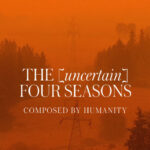We all have a part to play when it comes to the future of climate change. As individuals, we can make changes around our homes and workplaces. Changes like, washing our laundry in cold water and hanging to dry, walking instead of driving, and replacing our appliances to be energy efficient.
The Saskatchewan Environmental has a great list of things you can do to make a difference.
Here are some examples they give:
Add insulation to roof, walls, and basement
The more insulation a building has, the less heat it loses in the winter, and the less heat it gains in the summer. Insulation reduces both your heating bill in the winter and your air conditioning bill in the summer. Plus, a well-insulated building is more comfortable.
Switch light bulbs from incandescent to LED
Incandescent lighting is very inefficient, plus LED lighting lasts much longer, so you don’t have to replace bulbs nearly as often.
LED lights use approximately 1/6 the energy of incandescent lights and last 15-40 times as long as incandescent. Lighting accounts for nearly 20% of home electricity use. If an incandescent light is on only 3 hours/day, you can save $9/year for each bulb you upgrade to LED.
Switch off electrical devices when not in use (i.e. computers, printers, monitors, TVs, etc.)
Home electronics account for 14% of home electricity use. On average, that means $14 of your monthly electricity bill ($170 per year) is for home electronics. If you want to get control of your electricity bill, start by turning off televisions, computers, video games etc. when you are not using them.
Select native plants for landscaping
Native plants can provide a beautiful variety of colors and textures that bloom at various times of the year. And, once established, the plants should not need mowing, fertilizing or watering.
Check out the Native Plant Society of Saskatchewan website for more information on how to plant a native garden.
While there are steps that we can take as individuals, there’s also a lot we can do collectively. Groups like the Saskatchewan Environmental society advocate for policy changes that will help reduce greenhouse gas emitions, lowering the use of fossil fuels and replacing them with renewable energy, among other efforts.
The [Uncetain] Four Seasons was written as a call for world leaders to sign the Leaders Pledge for Nature and commit to reversing biodiversity loss by 2030.
Who is doing the work in your community? How can you help out? Do a search! Find out how you can support local groups that are making waves about climate change.









